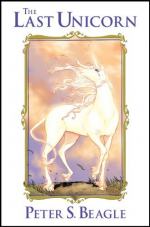|
This section contains 446 words (approx. 2 pages at 300 words per page) |

|
The unicorn appears in cultures as far removed from one another as Ireland and Japan, although it probably has its origins in China, India, or the Middle East. Its earliest appearance in western literature is in the writings of Ctesias, a Greek doctor who served the king of Persia in the fourth century B.C. He described the unicorn as a "wild ass" with a single, multicolored horn in the middle of its forehead. The unicorn also appears several times in the book of Psalms; early translators identified the Hebrew word "Re'em" as "one-horned," which in English became "unicorn." By medieval times, the unicorn had come to signify purity or chastity, and was usually depicted as pure white in color. In the iconography of medieval tapestries the unicorn was often associated with the Virgin Mary, and its horn was assumed to have magical powers. Frequently used...
|
This section contains 446 words (approx. 2 pages at 300 words per page) |

|




